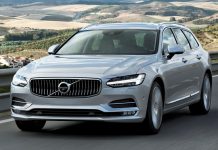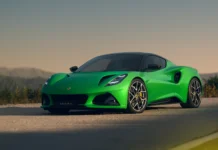
Inductive charging is making its way into our daily lives through smartphones, and automakers are working on ways to charge your car without any cables as well. Take one of Ford’s latest patent applications, recently unearthed by a member of the Mach-E Club forums, which shows a solar cell arrangement as a car cover to both protect and charge up your electric vehicle.
Per the application documents, the cover — which the member dubbed a ‘solar cocoon’ — houses several solar cells in a flexible arrangement. That way you can use it like a traditional car cover, but it also gathers energy that may be channeled into an EV’s batteries. Not only that, but Ford’s application mentions that:
“…the motor vehicle comprises at least one storage space for storing the flexible structure in its slack storage state, and at least one retraction device for retracting the flexible structure in its slack storage state into the storage space….The retraction device may for example have at least one electrically actuatable winding unit onto which the flexible structure, in its slack storage state, can be wound for retraction into the storage space.”
In other words, German inventors Sebastian Stauff, Bruno Alves and Tobias Ricke are looking at this solar cell arrangement as an integral part of the car. If it does come to fruition, it makes sense that it may be available as an option, and you actually stow it in the car so that you can quickly cover and uncover it, possibly with minimal physical effort, every time you’re able to park outside.

More range is always a good thing
Solar cells in electric cars are nothing new, but this does help solve one of the electric car’s pain points. If you can’t find a charger or don’t want to be tethered to a certain space, this can help regenerate some range on a sunny day. Now, the patent application won’t mention just how many solar cells may be used (that would depend on the size of the cover and the vehicle it’s used for), what materials they could use or how much power they could draw into the vehicle. However, if it can pull enough to offset your morning commute, it could mean you can drive your car without ever having to plug in to charge up at all.
If you’re curious, you can see the full patent application here. It’s possible that this could make its way to the Ford Mustang Mach-E as well as the brand’s future plug-in hybrids (the patent documents do show a C-Max Energi), but this is just an idea. At least for now.
























